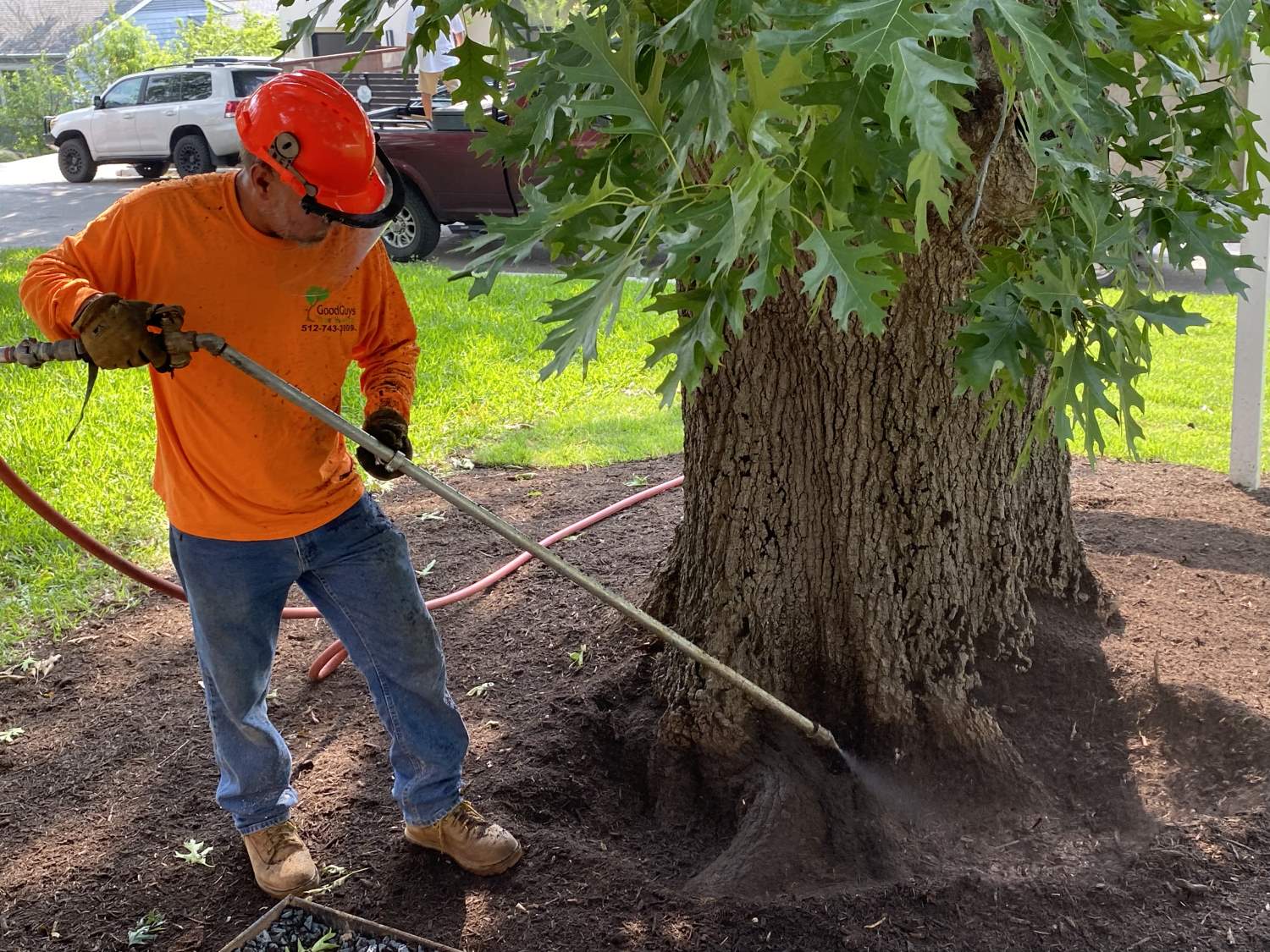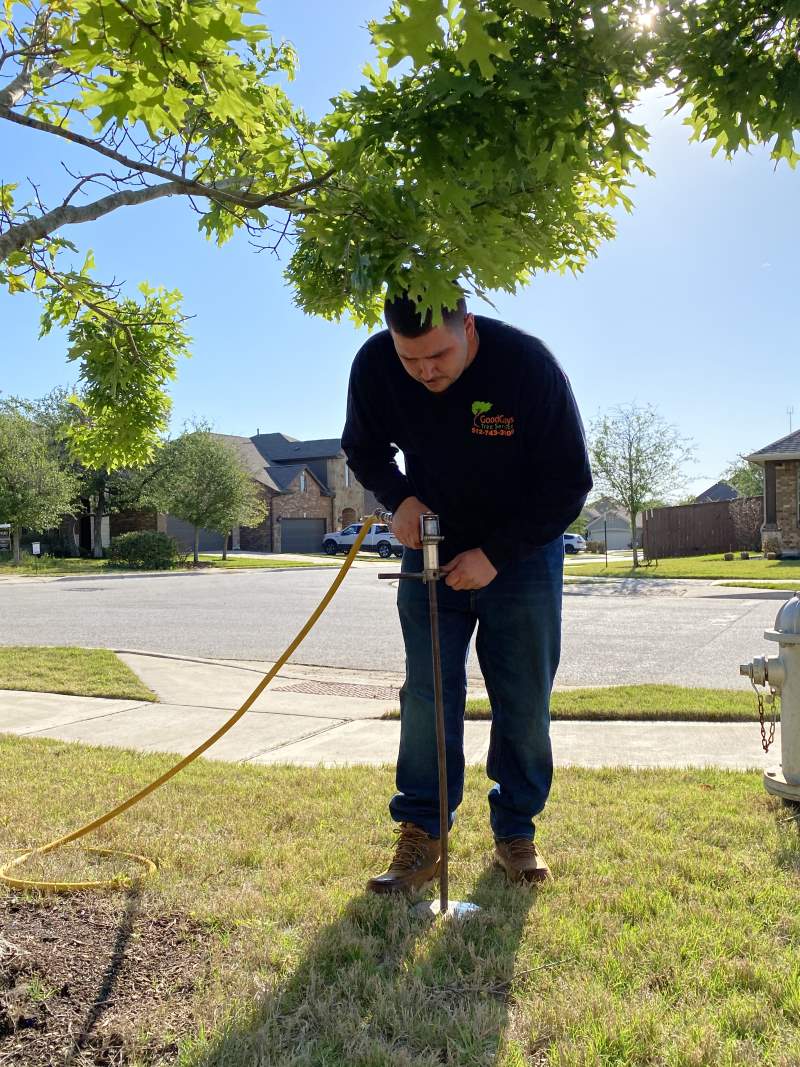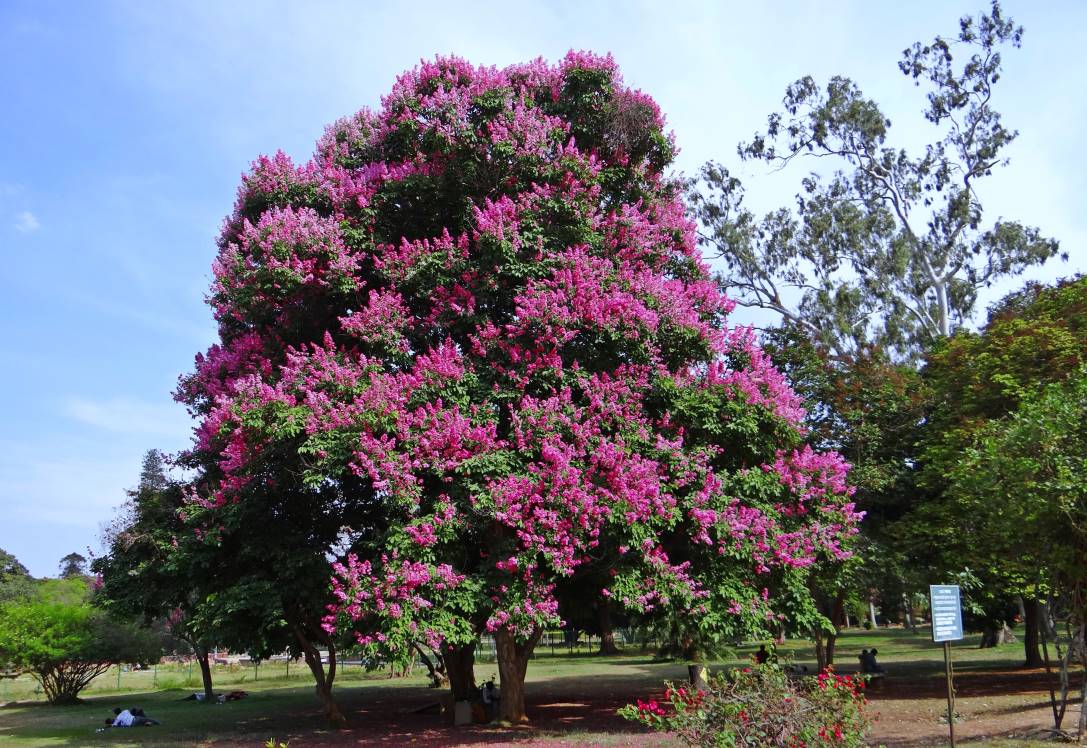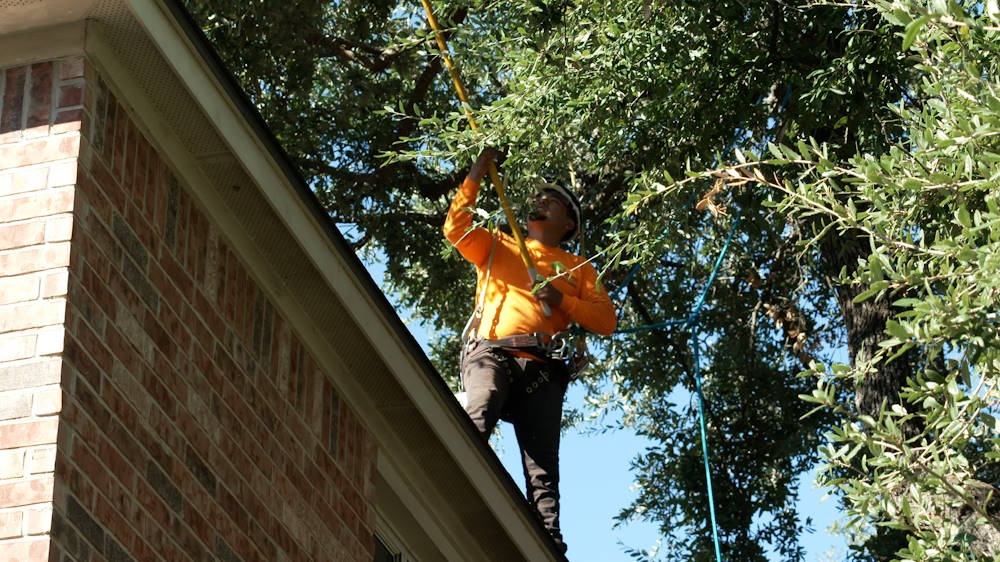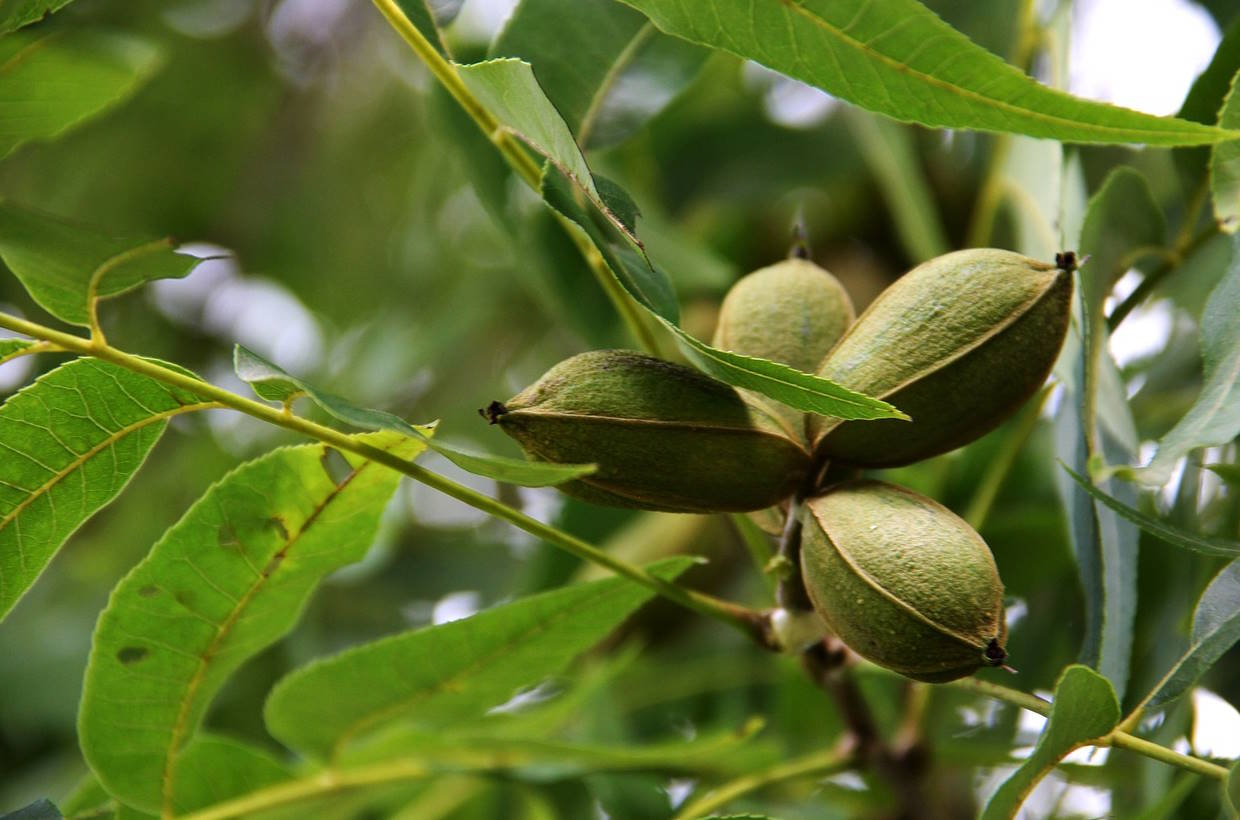Air spading is a process used by arborists to combat a common issue effecting trees – soil compaction.
If your trees aren’t looking the healthiest, it could be down to soil compaction, an issue impacting many urban trees in our area. Air spading is a non-invasive treatment for soil compaction, offering many advantages for your tree’s health!
What is Soil Compaction?
Air spading is a process used to reverse the effects of soil compaction on trees. Soil compaction is when the soil around the root system of tree becomes too tight and compacted. There are various causes, from heavy foot traffic to lawn maintenance, with the effects often taking years to fully appear.
Eventually, the soil becomes so compacted that it has less space to hold air and moisture. Trees require an abundance of air and water to remain healthy, so soil compaction becomes a serious issue for tree health.
What Does Air Spading Do?
Air spading involves using high-pressure jet sprays to reduce compacted soil beneath a tree. The air spade nozzle is inserted into the soil around the base of the tree, spraying compressed air to loosen the compacted soil.
Due to the pressure of the air spade, soil becomes less compacted, taking on a crumblier consistency. Crumblier soil allows more air and water to pass through the tree roots, ensuring maximum nutritional intake for optimal tree health!
The air spade is completely safe to use, causing no harm to the tree’s root. In fact, it allows for easier root inspection, where you can determine if the roots need pruned to encourage better development.
Basically, air spading offers many benefits for tree health, while being a quick and easy process to complete.
What to Expect From Air Spading?
If you’re considering air spading for trees on your property, here’s what you can expect from the process!
Reduced Soil Compaction
The most obvious advantage of air spading is reduced soil compaction. By blasting air through compacted soil, air spading loosens soil, making it easier for the roots to absorb water and air.
With less soil compaction, trees can absorb more nutrients, while improving soil drainage. Both the root system and overall tree benefits from this, increasing growth and vitality no long after the treatment.
Healthier Tree Roots
By removing soil compaction, tree roots have more access to air and water, helping to improve overall tree health.
Additionally, the space created by the air spade in the soil encourages more root development. The more roots that develop, the more nutrients the tree absorbs, leading to an even healthier tree.
Also, when air spading, an arborist can inspect the root systems for any issues. Sometimes tree roots need pruning, and air spading can reveal if this is necessary to encourage healthier growth.
Increased Tree Growth
As mentioned above, air spading reduces soil compaction and encourages healthier root development, meaning the tree has more access to the nutrients it needs for healthy growth.
So, with healthier root systems comes increased growth above the ground! Tree canopies become wider and fuller, with increased vibrancy across the leaves. Branch growth also increases, leading to a much bigger and healthier tree!



